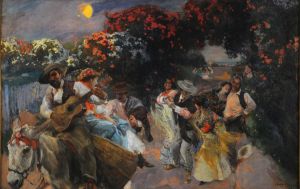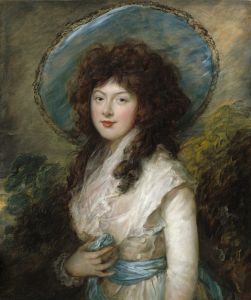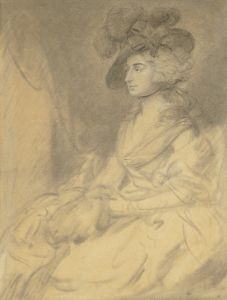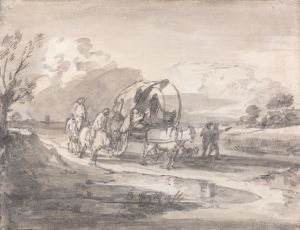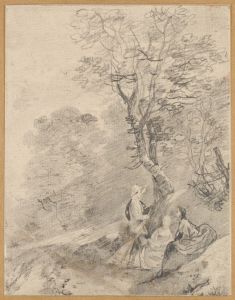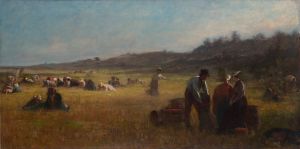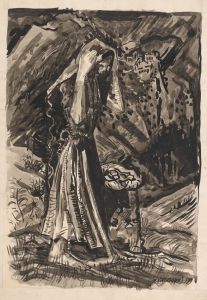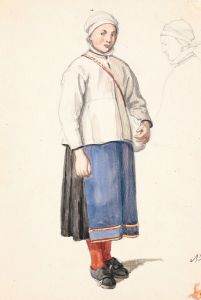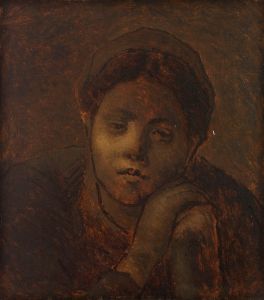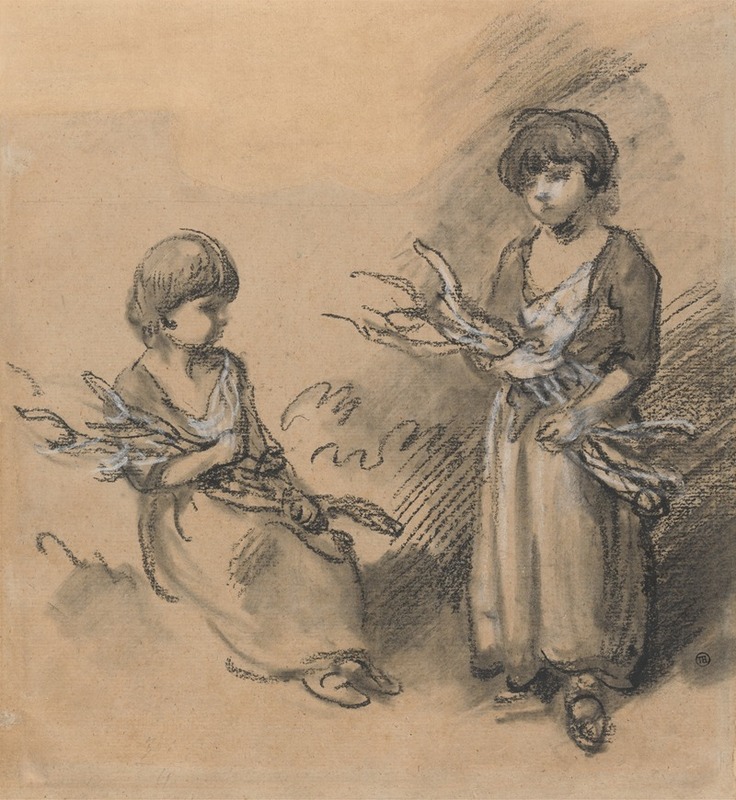
Studies of Girls Carrying Faggots
A hand-painted replica of Thomas Gainsborough’s masterpiece Studies of Girls Carrying Faggots, meticulously crafted by professional artists to capture the true essence of the original. Each piece is created with museum-quality canvas and rare mineral pigments, carefully painted by experienced artists with delicate brushstrokes and rich, layered colors to perfectly recreate the texture of the original artwork. Unlike machine-printed reproductions, this hand-painted version brings the painting to life, infused with the artist’s emotions and skill in every stroke. Whether for personal collection or home decoration, it instantly elevates the artistic atmosphere of any space.
Thomas Gainsborough's "Studies of Girls Carrying Faggots" is a notable work by one of the most prominent British painters of the 18th century. Gainsborough, born in 1727 in Sudbury, Suffolk, was a leading figure in the development of British landscape and portrait painting. His works are celebrated for their elegance, naturalism, and the artist's ability to capture the subtleties of human expression and the beauty of the natural world.
"Studies of Girls Carrying Faggots" is a drawing that exemplifies Gainsborough's interest in rural life and his skill in depicting everyday scenes with a sense of grace and realism. The artwork features young girls engaged in the laborious task of carrying bundles of sticks, or faggots, which were commonly used as firewood. This subject matter reflects Gainsborough's fascination with the rural poor and his ability to portray them with dignity and empathy.
Gainsborough's technique in this study is characterized by his fluid and expressive use of line, which captures the movement and effort of the figures as they carry their burdens. The drawing is executed with a keen eye for detail, yet it maintains a sense of spontaneity and liveliness. This balance between detail and fluidity is a hallmark of Gainsborough's style, which often combines elements of portraiture with landscape and genre scenes.
The choice of subject in "Studies of Girls Carrying Faggots" aligns with Gainsborough's broader artistic interests. Throughout his career, he frequently depicted rural scenes and the lives of common people, offering a glimpse into the social conditions of his time. This focus on rural subjects can be seen in other works by Gainsborough, such as "The Harvest Wagon" and "The Cottage Door," where he similarly captures the simplicity and hardship of rural life.
Gainsborough's work was highly influential during his lifetime and continues to be celebrated today. He was a founding member of the Royal Academy of Arts in 1768 and enjoyed considerable success as a portraitist, counting members of the British aristocracy among his patrons. Despite his success in portraiture, Gainsborough often expressed a preference for landscape painting, which he pursued with great passion throughout his career.
"Studies of Girls Carrying Faggots" is an example of Gainsborough's ability to convey the beauty and dignity of ordinary people through his art. The drawing not only showcases his technical skill but also his deep empathy for his subjects. Gainsborough's work remains an important part of the British art historical canon, admired for its elegance, sensitivity, and the artist's unique ability to capture the essence of his subjects.
While specific details about the provenance or exhibition history of "Studies of Girls Carrying Faggots" may not be extensively documented, the drawing is representative of Gainsborough's broader oeuvre and his enduring legacy as one of Britain's greatest artists. His works are held in major collections around the world, including the National Gallery in London and the Louvre in Paris, ensuring that his contributions to art continue to be appreciated by audiences worldwide.





